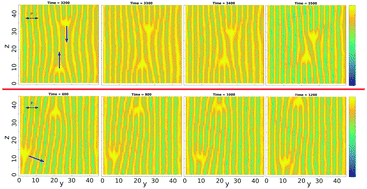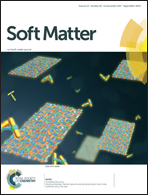Electroconvection of pure nematic liquid crystals without free charge carriers
Abstract
We consider electroconvection as a response of nematic liquid crystals to an external electric AC field, in the absence of free charge carriers. Previous experimental and theoretical results emphasized charge carriers as a necessary precondition of electroconvection because free-charges in the fluid can respond to an external electric field. Therefore, ionized molecules are considered as responsible for the driving of electroconvective flows. In experiments, finite conductivity is achieved by adding charge-carrying dye molecules or in non-dyed liquid crystals by impurities of the samples. The phenomenon of electroconvection is explained by the Carr–Helfrich theory, supported by numerical simulations. In the present paper, we show that electroconvection may occur also in pure nematic liquid crystals. By means of particle-based numerical simulations we found that bound charges emerge by alignment of polarized liquid crystal molecules in response to the external electric field. In our simulations we could reproduce the characteristic features of electroconvection, such as director-flow patterns, the phase-transition in the voltage-frequency diagram, and dislocation climb/glide motion, which are well known from experiments and hydrodynamic simulations under the assumption of free charge carriers.



 Please wait while we load your content...
Please wait while we load your content...